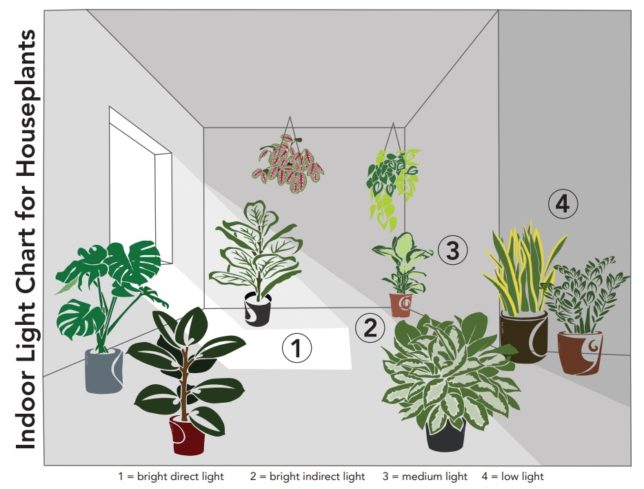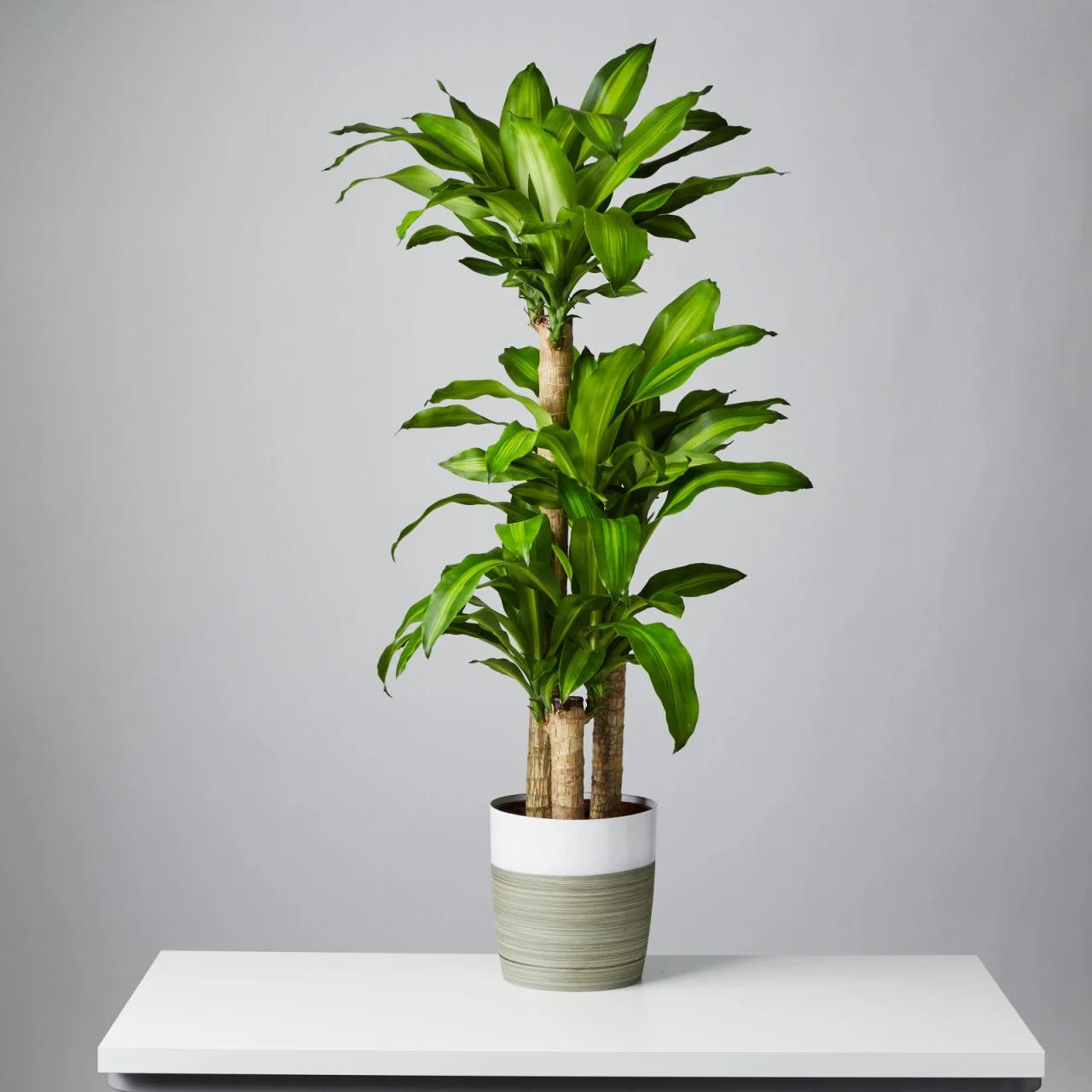Create a Lush Indoor Oasis with the Best Low-Light Indoor Plants
Create a Lush Indoor Oasis with the Best Low-Light Indoor Plants
Blog Article
Discover the Unique Advantages of Low-Light Indoor Plants for Your Living Space
Incorporating low-light interior plants right into your living space uses a wide range of benefits that expand far past plain appearances. These sturdy plants not just thrive in environments with minimal sunlight however additionally serve important features such as air purification and humidity improvement.
Air Filtration Benefits
Low-light interior plants not only enhance the aesthetic appeal of living rooms but also play a considerable role in air purification. Research study has actually demonstrated that specific plant species can efficiently eliminate typical interior contaminants, consisting of formaldehyde, benzene, and trichloroethylene. These substances frequently rise from household items such as furnishings, cleaning products, and structure materials, adding to interior air quality concerns.
Plants such as the snake plant, pothos, and tranquility lily are specifically skilled at filtering system dangerous materials from the air while thriving in low-light conditions. The process of phytoremediation, wherein plants take in and metabolize contaminants, makes it possible for these types to add dramatically to a much healthier interior environment. Furthermore, with photosynthesis, plants release oxygen, better enhancing air top quality.
Integrating low-light interior plants into office or home rooms not just provides aesthetic benefits but additionally acts as a useful method for improving air high quality. By selecting the appropriate types, individuals can create an environment that advertises health and minimizes direct exposure to unsafe contaminants, making these plants a crucial component in contemporary indoor living.

State Of Mind Enhancement Effects
Numerous studies have actually revealed that incorporating interior plants can substantially improve state of mind and total mental wellness. The visibility of greenery in indoor settings has been connected to decreased anxiety levels, boosted sensations of peace, and boosted emotional health. Low-light interior plants, specifically, grow in settings where natural light is restricted, making them best for numerous living spaces.
Study suggests that communicating with plants can boost the launch of serotonin, a neurotransmitter connected with feelings of happiness and well-being. Furthermore, the act of taking care of plants cultivates a sense of obligation and success, further adding to favorable mental health and wellness results. Furthermore, low-light plants such as snake plants, pothos, and tranquility lilies have been shown to boost air high quality, which is intrinsically linked to state of mind enhancement.
Incorporating these plants right into your office or home can develop a tranquil environment, supplying a sensory and aesthetic retreat from the pressure of life - Best low-light indoor plants. As individuals spend raising amounts of time inside, the mood-enhancing impacts of low-light interior plants end up being much more vital, giving not only aesthetic appeal yet likewise an extensive impact on emotional wellness
Low Upkeep Needs
For those seeking to enhance their interior spaces without a considerable time commitment, low-light indoor plants are an ideal selection due to their low maintenance needs. These durable plants prosper in less-than-ideal illumination conditions, making them best for homes and workplaces where all-natural sunlight is restricted.
:max_bytes(150000):strip_icc()/low-light-houseplants-asparagus-fern-getty-1123-74a20afe3f9249ce947a337e497b84ec.jpg)
Pest resistance is an additional advantage of low-light indoor plants. Numerous selections are much less vulnerable to usual bugs, decreasing the requirement for constant monitoring and treatment. Furthermore, these plants usually grow more slowly than their high-light equivalents, meaning less regular repotting and pruning are essential.
Visual Allure and Flexibility

Additionally, these plants can be prepared in myriad means, whether in groups for a rich effect or as standalone features to attract the eye. The choices of planter designs-- from smooth ceramic pots to rustic wooden containers-- further improve their visual value, permitting home owners to express their individual design.
Furthermore, low-light plants can be purposefully placed in locations that might otherwise really feel disregarded, such as edges or dimly lit racks, thereby maximizing their decorative possibility. Ultimately, the mix of their striking appearance and versatility makes low-light indoor plants an important addition to any kind of space, developing an inviting ambience that promotes well-being and relaxation.
Enhanced Moisture Degrees
Enhancing interior moisture degrees is among the substantial advantages of including low-light interior plants right into living rooms. These plants naturally launch moisture vapor via a procedure referred to as transpiration, which happens when water absorbed by the roots relocates with the plant and vaporizes from the fallen leaves. This process not only boosts humidity yet also adds to a healthier indoor environment.
Enhanced humidity levels can minimize different health concerns, such as completely dry skin, respiratory issues, and allergies. Many click site people experience pain in dry interior conditions, specifically during winter season months when heater remain in use. By tactically positioning low-light plants throughout your home, you can create an extra balanced humidity level that fosters general health.
Moreover, certain low-light indoor plants, like peace lilies and spider plants, are particularly efficient at increasing moisture. Their ability to prosper in low-light settings makes them perfect for different spaces, from offices to rooms. In addition to boosting humidity, these plants can additionally improve air top quality by straining common interior contaminants, making them a valuable enhancement to any kind of living area. Thus, low-light interior plants serve both functional and visual objectives, promoting a much healthier environment.
Conclusion
In summary, low-light indoor plants use many advantages that contribute to a much healthier and much more welcoming living area. Including these resistant plants into interior setups not only boosts the ambiance yet likewise advertises general health, establishing a tranquil shelter for locals.
Plants such as the serpent plant, continue reading this pothos, and peace lily are especially experienced at filtering harmful materials from the air while flourishing in low-light conditions. Low-light plants such as snake plants, pothos, and tranquility lilies have been shown to improve air high quality, which is intrinsically linked to mood enhancement.
Low-light interior plants, such as serpent plants, pothos, and ZZ plants, not only enhance the visual landscape of a space yet also introduce various structures and shades of eco-friendly that can enhance diverse indoor styles. These plants naturally launch moisture vapor through a process understood as transpiration, which takes place when water absorbed by the roots moves through the plant and evaporates from the leaves.Furthermore, certain low-light interior plants, like tranquility lilies and spider plants, are especially efficient at raising humidity.
Report this page